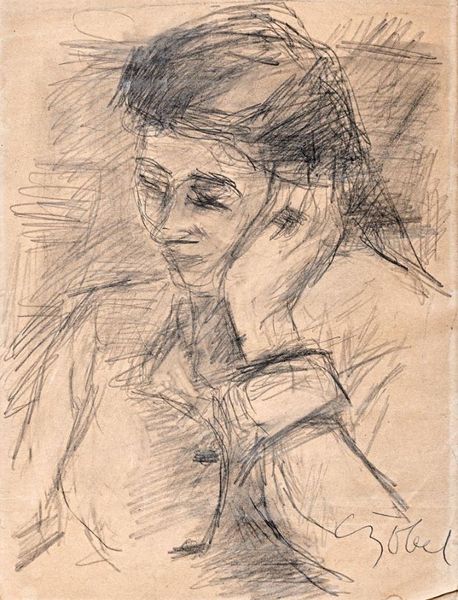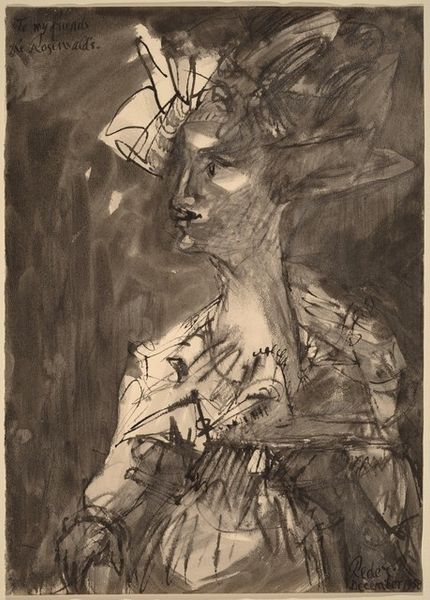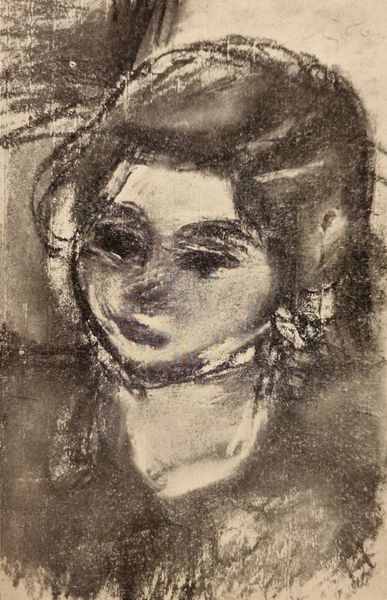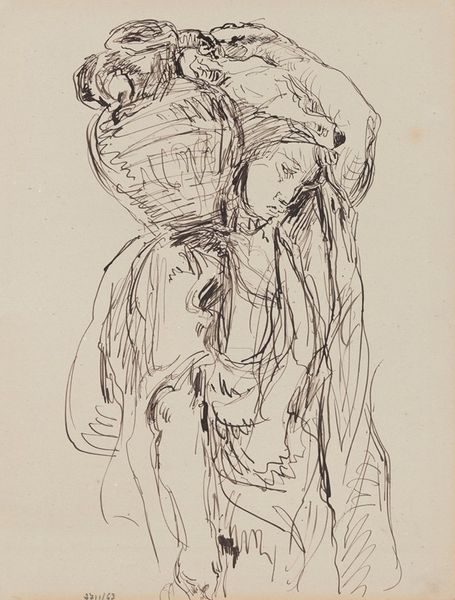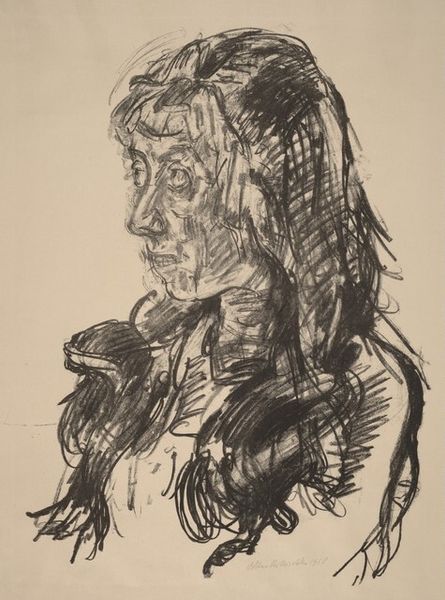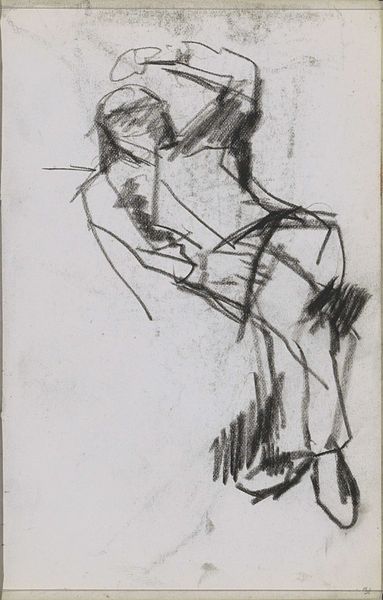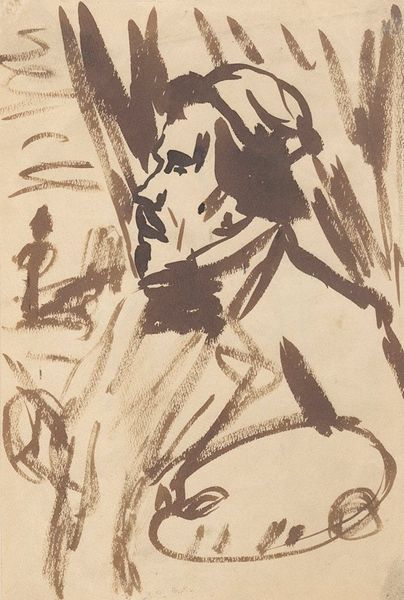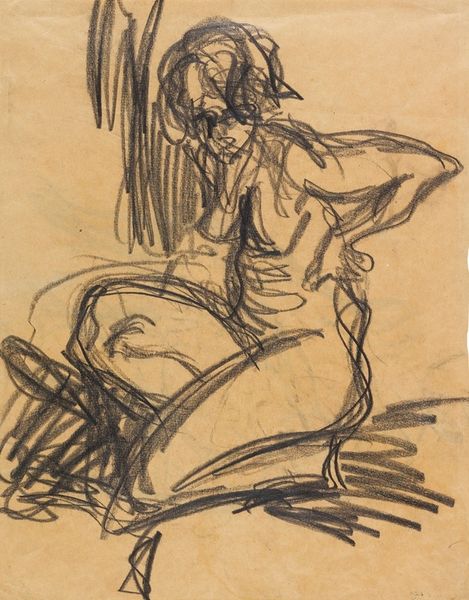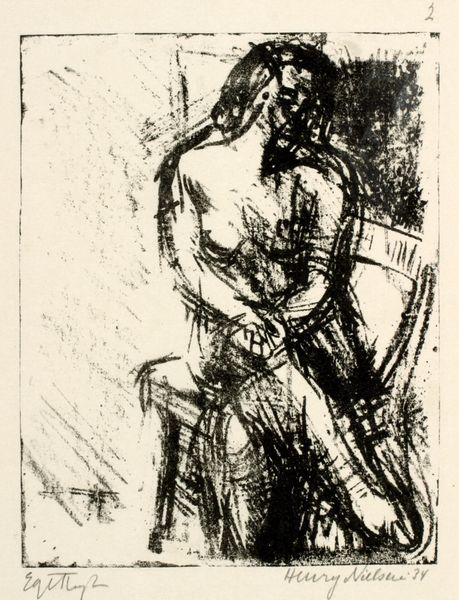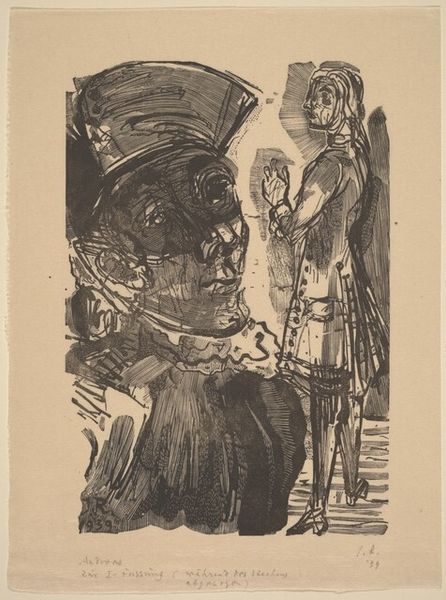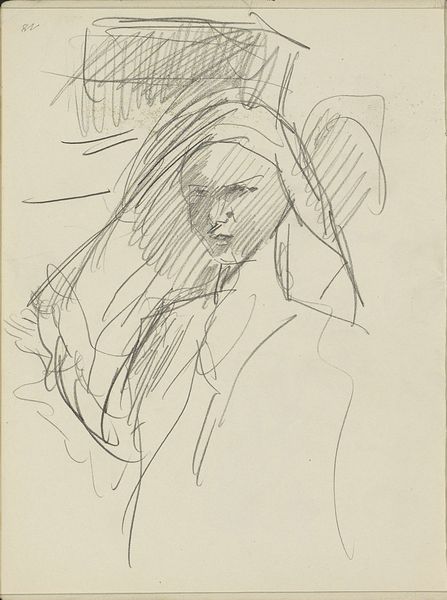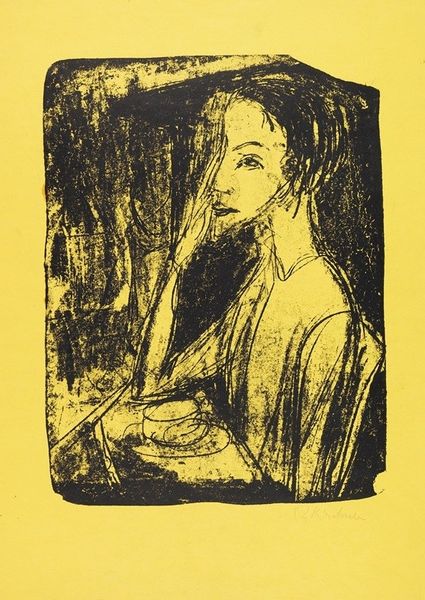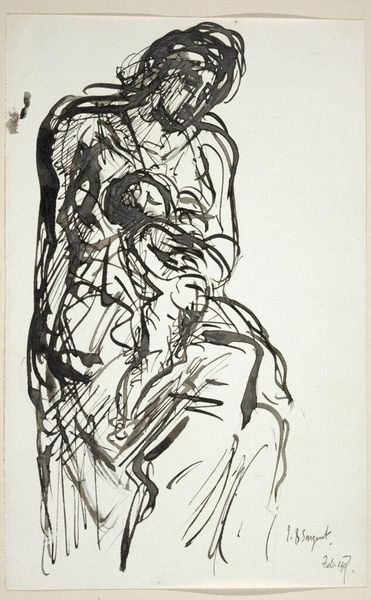
Copyright: National Gallery of Art: CC0 1.0
Curator: Oh, there's such a striking energy in this image, I think. The composition really holds your attention. Editor: Well, here we have Imre Reiner's "Artemis," created in 1949. It's a woodcut print, full of sharp contrasts. A fascinating interpretation, particularly coming so soon after the war. Curator: It feels haunted, doesn't it? Those eyes are pools of some ancient knowing, but with a vulnerability. The heavy black ink feels almost oppressive around her, like a shadow clinging to her form. Editor: The title of course connects the artwork with Greco-Roman mythology: Artemis was the goddess of the hunt, wilderness, wild animals, the Moon, and chastity. In looking closely, she appears almost burdened by her symbolism here. Curator: Definitely. She’s carrying those symbolic weights. And there's something so immediate about the mark-making. It doesn't feel delicate, even though it's on paper. It feels raw, visceral. You can feel the artist wrestling with the wood. The composition uses light and shadow with force, not subtlety. Editor: Indeed, this raw intensity is something one associates with German Expressionism; the themes, as you mention, wrestle with what it means to be human under duress and after intense and systematic violence. It isn't just an aesthetic choice but one borne out of experience. Curator: Makes you think, what does Artemis mean in this context? Protector, maybe? Of what's left, of what's wild, inside and out? It’s interesting that he uses such an old image for those feelings. Is it because that symbol feels beyond recent history and suffering, something ancient that reminds us how much lasts beyond our human tragedies? Editor: That's insightful. Reiner’s choice suggests that the mythic provides a critical distance, a framework to process experiences of recent upheaval in ways that are restorative. "Artemis" isn't just an image, then; it's an act of cultural remembering, as you suggest. Curator: Right. Art at the time also acted as therapy; a kind of recovery beyond description in everyday languages. It’s like shouting with respect! Editor: Exactly! Reiner has left us so much to discuss regarding both context and aesthetics. It provides many interpretations worth considering today!
Comments
No comments
Be the first to comment and join the conversation on the ultimate creative platform.
